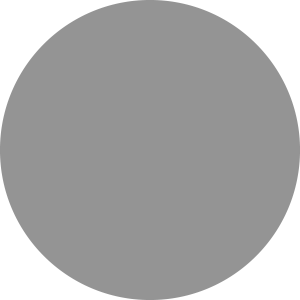Working alone is a nightmare, especially if you are in a country where the culture of research is not yet well established. As it is a necessity to have networks to share your thoughts, research and experiences, I applied for Â鶹AV membership as a way to provide myself with the right tools and contacts I need to advance my research.
Position:
Lecturer in physical chemistry, Universidad Tecnica Particular de Loja, Ecuador
Specialism: Computational materials science
Membership classification: MÂ鶹AV
A thriving researcher, Jorge Ontaneda has published several papers in the field of surface science, with primary research interests in the electronic structure of metal-based interfaces for a wide variety of applications. But how he got into chemistry is a fortuity, as he originally wanted to study physics at university and beyond.
“There wasn’t an option to study physics at my home university in Loja in Ecuador, so I had to choose something closely related, which was chemical engineering. I enjoyed the work I was doing and at the end I met my future PhD supervisor, Dr Ricardo Grau-Crespo, who invited me to join his research group at the University of Reading.
“Accepting the offer, I applied for a scholarship from the Ecuadorian government and ended up coming to the UK to get my PhD. It focused on computational chemistry, so basically performing simulations using computers for understanding chemical phenomena at molecular level. I’m more involved in that area now, and I’m still collaborating with my former supervisor, which is great.
While it wasn’t the original plan to get a PhD in chemistry, I’m very happy to have ended up in the chemical sciences because you get to synthesise complex chemical compounds, understand many aspects of common and novel materials, and in my particular case, do computational chemistry – which I simply love.
Jorge has been a lecturer in physical chemistry at the Universidad Tecnica Particular de Loja in Ecuador since 2018, where he says there are two components to his job – teaching and performing research.
“I’m in charge of the students in their second year of undergraduate study, so I share my knowledge with them to help them succeed. The other part of my job is conducting research, specifically in the field of computational materials science for which I use density functional theory simulations to gain insights into the behaviour of catalytic surfaces.
“My work is done in close collaboration with experimentalists in the UK, in particular with the group of Professor Georg Held at the Diamond Light Source facility. We are investigating the mechanism of heterogeneously catalysed enantioselective reactions which is promising for the pharmaceutical industry given the growing demand for optically pure chemicals in drug manufacturing.”
Let’s advance chemistry, together. Reach your full potential with Â鶹AV membership.
To ensure he continues working at the top level, Jorge joined the Â鶹AV in November 2020 as a way to branch out and meet others working in the chemical sciences.
“Working alone is a nightmare, especially if you are in a country where the culture of research is not yet well established. As it is a necessity to have networks to share your thoughts, research and experiences, I applied for Â鶹AV membership as a way to provide myself with the right tools and contacts I need to advance my research. Joining has made me see the benefit of belonging to a society – especially one of the greatest in the world like the Â鶹AV – and it was definitely one of the best decisions I’ve ever made in my life.”
Since joining, Jorge has been making the most of the printed magazines, helping him to stay up to date with discoveries going on in the world. He has also been reading the journal of Physical Chemistry Chemical Physics, one of the most popular journals in his field, and one he has published in previously.
“I have a publication in Physical Chemistry Chemical Physics about the interaction of boron nitride on nickel surfaces. In this study, we employed DFT simulations to explain the effect of the metal support on the Raman frequency of boron nitride monolayers, which is commonly used in their identification. The research was done in close collaboration with my colleagues in Spain and the UK, and was selected as one of the hot articles in its year of publication (2019).
“Going forward I would like to continue publishing work in Â鶹AV journals because they are very well known and highly read. They are also very responsive and contact you as soon as possible with feedback, which is great for minimising stress.
I think one of the strongest things I can say about membership is about visibility and being recognised for your work in journals published by one of the most famous societies in the world. It provides you with confidence when applying for jobs, especially competitive jobs like postdoctoral researchers.
Above all, Jorge values the network his Â鶹AV membership gives him access to and feels that his membership will be able to help him with collaborations now and in the future.
“Staying in touch with collaborators or potential collaborators is one of the things that you need the most when you become a scientist in order to share your ideas and get feedback, so you can progress.
“As a worldwide society, the Â鶹AV has strong members, and the members make the society stronger. Being a member will help with networking and connections because I know that some of the strongest scientists in my field of research belong to the Â鶹AV, and I may be able to connect and collaborate with them through this network.”

